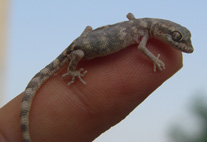Abstract
Species diversity is largely underestimated by current taxonomy, precluding a precise understanding of evolutionary processes. Genetic data have increased our understanding of that cryptic diversity, and multilocus studies are now desirable. In this study, we used mitochondrial and nuclear DNA sequences to evaluate the taxonomic status of the western Mexico’s populations of Phaethornis longirostris. We found differences of 4.2 % in mtDNA and different alleles for one nDNA locus between western and eastern Mexican populations. Molecular and morphological evidence support the separation of these populations (P. l. mexicanus and P. l. griseoventer) as the species Phaethornis mexicanus Hartert 1897. Phaethornis mexicanus is endemic to western Mexico and sister to the remaining populations of P. longirostris. The speciation of P. mexicanus probably occurred around 880,000 years ago by a vicariant event involving climatic-vegetational changes.

